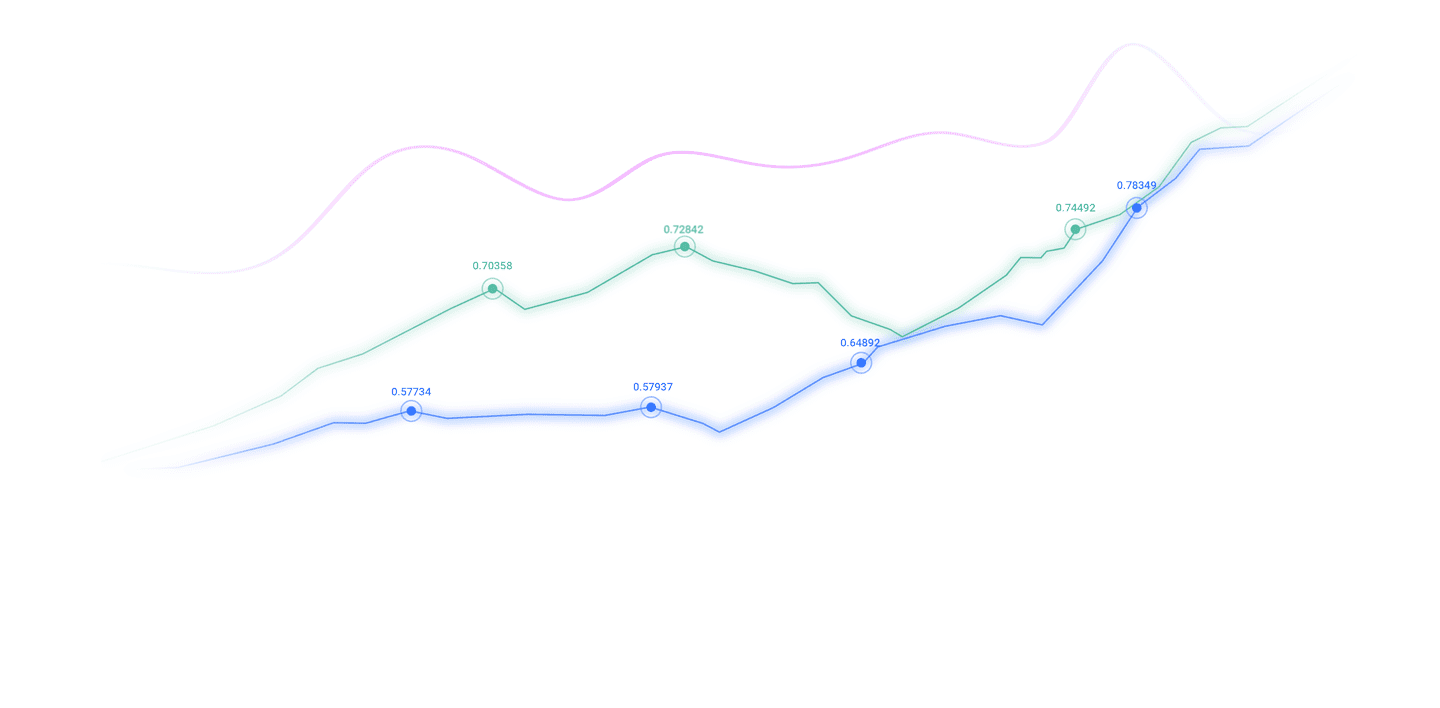Trusted by over 15 Million Traders
The Most Awarded Broker
for a Reason
CATEGORIES
News
- Trump believes Powell may be prepared to cut interest rates, Europe and the Unit
- Strong fluctuations are coming under pressure, and gold and silver need more ret
- Gold, swing!
- Strong US dollar and interest rate cut prospects pull, gold is in a "range cage"
- The US dollar index breaks through the 98 mark, and a new round of negotiations
market analysis
A collection of positive and negative news that affects the foreign exchange market
Wonderful Introduction:
If the sea loses the rolling waves, it will lose its majesty; if the desert loses the dancing of flying sand, it will lose its magnificence; if life loses its real journey, it will lose its meaning.
Hello everyone, today XM Foreign Exchange will bring you "【XM Foreign Exchange Decision Analysis】: Collection of positive and negative news that affects the foreign exchange market". Hope it will be helpful to you! The original content is as follows:
1. Macroeconomic data triggered market fluctuations
A series of macroeconomic data recently released have had a profound impact on the global foreign exchange market. The non-farm employment data in August performed extremely poorly, with only 22,000 new jobs, and the unemployment rate climbing to 4.3%, far lower than market expectations. This data greatly strengthens market expectations for the Federal Reserve to cut interest rates at its September interest rate meeting. According to the CME FedWatch tool, traders' expectation of a 25 basis point cut in September is as high as 100%, and some investors even bet on a 50 basis point cut.
The Fed's expectation of a rate cut has heated up, putting the US dollar index under downward pressure. In the week of September 7, the US dollar index fluctuated and fell, with a cumulative decline of 1.2% throughout the week. The euro benefited from the weakening of the US dollar, rising 1.3% that week, breaking through the 1.12 mark at one point. Non-US currencies generally strengthened after the data was released, and currency pairs such as the British pound, the Australian dollar, and the US dollar rose to varying degrees, indicating that the market's confidence in US dollar assets and its favor for non-US currencies.
2. The geopolitical situation adds uncertainty
The tension in the geopolitical situation continues to affect the foreign exchange market. The conflict between Russia and Ukraine continues, and the situation has escalated recently. The two sides have launched fierce firefights in many regions. At the same time, the EU announced that it would ban the import of refined products produced by Russian crude oil from early 2026. This move has exacerbated tensions between regions and also had an impact on the global energy market and foreign exchange market.
The warming of risk aversion sentiment has made investors seek safe assets, and traditional safe-haven currencies such as the Japanese yen and Swiss francs are favored. dayThe dollar appreciated 0.8% against the US dollar this week, and the Swiss franc also saw a certain increase against the US dollar. Currencies that are closely linked to geopolitical conflicts are under pressure, such as the volatility of the ruble against the dollar, which fell sharply after news of tensions came out. Despite a series of interventions by the Russian central bank, the ruble exchange rate is still in a state of unstable state.
3. Central Bank policy dynamics influence the direction of currency
In terms of the People's Bank of China, it continues to promote the internationalization of the RMB and conducts steady regulation of the domestic financial market. Data on September 7 showed that as of the end of August 2025, my country's foreign exchange reserves were US$332.2 billion, up US$29.9 billion from the end of July, an increase of 0.91%, setting a new high since January 2016. This shows that my country's economic operation has made steady progress, providing support for the basic stability of the scale of foreign exchange reserves, and to a certain extent, it has enhanced the confidence of the RMB in the international market. Meanwhile, the People's Bank of China has increased its holdings of gold for the 10th consecutive month. As of the end of August, my country's gold reserves were 74.02 million ounces, an increase of 60,000 ounces from the end of July. The central bank's increase in gold holdings will help optimize the international reserve structure, enhance the credit base of the RMB, and play a positive role in the long-term stability of the RMB exchange rate. The onshore RMB exchange rate against the US dollar remained stable overall this week, with a narrow volatility range, showing the central bank's effectiveness in maintaining exchange rate stability.
In the United States, in addition to the strong market expectations for the Fed's interest rate cut, US Treasury Secretary Bescent recently publicly "beat" the Fed, calling on it to return to its statutory mission such as "moderate long-term interest rates". This move has aroused market concerns about the independence of the Fed and further exacerbated the uncertainty of the US dollar. If the Fed advances or increases interest rate cuts under political pressure, the US dollar may weaken further; on the contrary, if the Fed adheres to the independence of monetary policy and maintains the current policy rhythm, the US dollar may gain some support in the short term.
4. Adjustment of trade policy impacts currency exchange rate
The adjustment of trade policy has a significant impact on the foreign exchange market. India's continued decline in rupee hit a new historical low due to the high US tariffs of 50%. The dollar has risen by 3% against the Indian rupee year-to-date, and the rupee has become one of the worst-performing major currencies in Asia. High tariffs are expected to seriously impact key industries of India's labor-intensive SMEs, including textiles, gems, jewelry, shrimp, etc., accounting for more than half of India's total annual exports to the United States (more than US$85 billion). Although the RBI has sold the dollar to intervene in the market to support the rupee, its strength is not as strong as before, with analysts pointing out that the bank may allow the rupee to depreciate further to help exporters withstand the impact of high tariffs.
Argentina, on September 9, local time, due to President Mile's Free Progressive Party's defeat in the Buenos Aires provincial election, which aroused the outside world's concerns about whether the government can successfully advance the economic reform agenda, the Argentine market suffered a three-killed stocks, bonds and foreign exchanges. The peso exchange rate depreciates by nearly 6% against the US dollar. Although the Minister of Economic Affairs urgently calls for the floating exchange rate system to not beChange, but market concerns about Argentina's economic outlook put the peso under huge downward pressure.
In general, the current foreign exchange market is affected by many factors such as macroeconomic data, geopolitical situation, central bank policy dynamics, and trade policy adjustments. Positive and negative news are intertwined, and market volatility is intensifying. When Investors conduct foreign exchange transactions, they need to pay close attention to changes in these factors and make investment decisions with caution.
The above content is all about "【XM Foreign Exchange Decision Analysis】: Collection of Positive and Negative News that Influence the Foreign Exchange Market". It was carefully www.xm-forex.compiled and edited by the XM Foreign Exchange editor. I hope it will be helpful to your trading! Thanks for the support!
Every successful person has a beginning. Only by having the courage to start can you find the way to success. Read the next article now!
Disclaimers: XM Group only provides execution services and access permissions for online trading platforms, and allows individuals to view and/or use the website or the content provided on the website, but has no intention of making any changes or extensions, nor will it change or extend its services and access permissions. All access and usage permissions will be subject to the following terms and conditions: (i) Terms and conditions; (ii) Risk warning; And (iii) a complete disclaimer. Please note that all information provided on the website is for general informational purposes only. In addition, the content of all XM online trading platforms does not constitute, and cannot be used for any unauthorized financial market trading invitations and/or invitations. Financial market transactions pose significant risks to your investment capital.
All materials published on online trading platforms are only intended for educational/informational purposes and do not include or should be considered for financial, investment tax, or trading related consulting and advice, or transaction price records, or any financial product or non invitation related trading offers or invitations.
All content provided by XM and third-party suppliers on this website, including opinions, news, research, analysis, prices, other information, and third-party website links, remains unchanged and is provided as general market commentary rather than investment advice. All materials published on online trading platforms are only for educational/informational purposes and do not include or should be considered as applicable to financial, investment tax, or trading related advice and recommendations, or transaction price records, or any financial product or non invitation related financial offers or invitations. Please ensure that you have read and fully understood the information on XM's non independent investment research tips and risk warnings. For more details, please click here


































































































